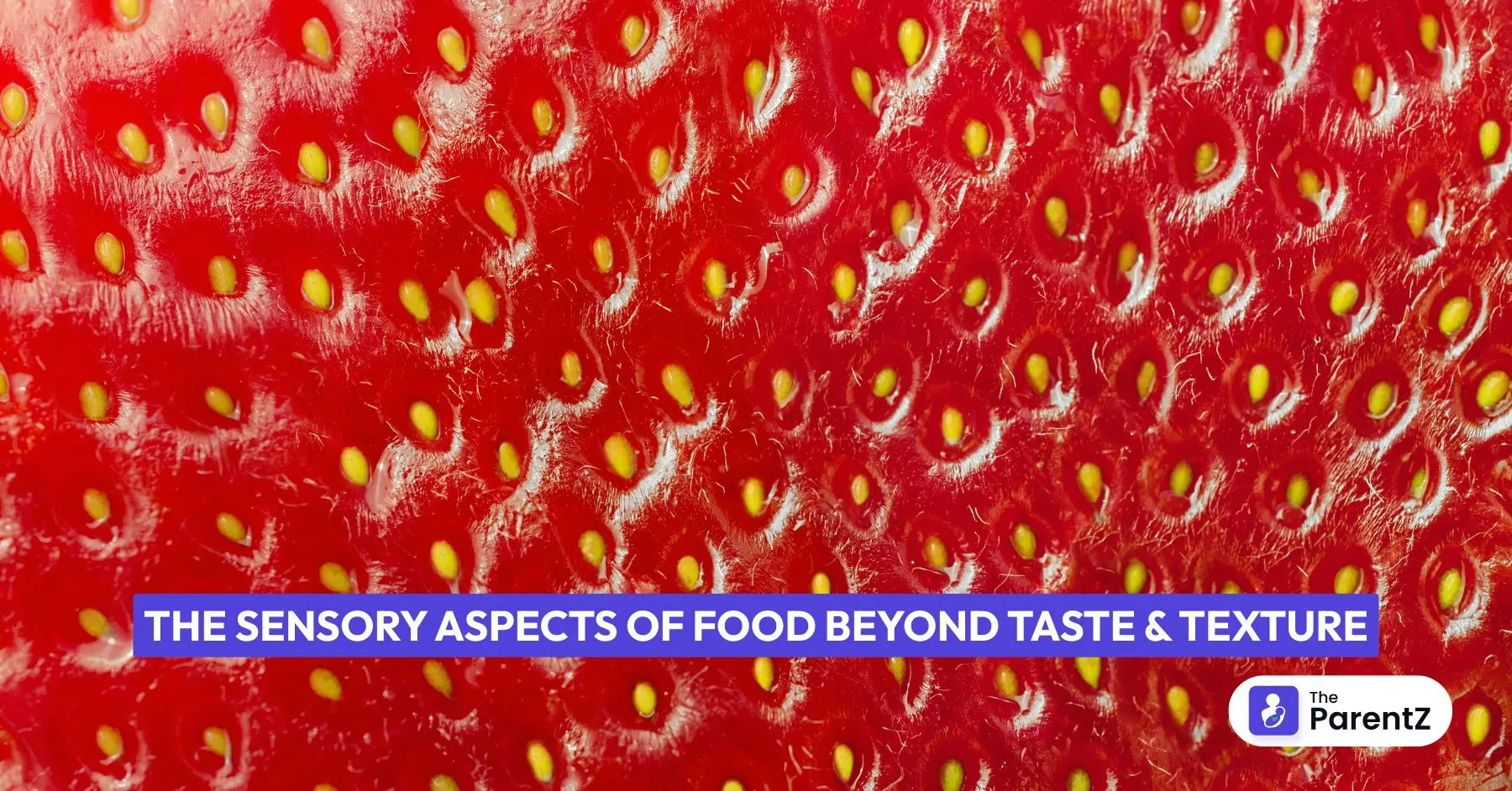When you think of food, your minds usually jump to taste—sweet, salty, spicy, yum! Or maybe texture—crunchy chips, mushy bananas, creamy yogurt. But food is far more than what happens on your tongue or between your teeth.
Especially for kids, eating is a multisensory experience. It’s a blend of how food looks, smells, sounds, and even how it feels in the hand. And for some children, these sensory elements can make the difference between a happy bite and a mealtime meltdown.
Read this article to explore the sensory aspects of food beyond just taste and texture.
Sight: The First Bite Is With the Eyes
Before the fork ever hits the mouth, your child is already forming an opinion—just by looking.
Bright colors, fun shapes, and even how food is arranged on the plate can influence their willingness to try it. That’s why bento boxes and smiley-face pancakes are often more effective than a lecture on “healthy eating.”
But there’s more. A sudden change in the appearance of familiar food—like brown spots on a banana or sauce touching the rice—can trigger anxiety for some kids, especially those with sensory sensitivities. For them, how it looks matters as much as what it is.
Smell: The Forgotten Flavor Hero
Did you know that about 80 percent of taste is actually smell? That’s right—if your kid has a stuffy nose, even their favorite mac and cheese might suddenly taste like cardboard.
Smells have power. The comforting scent of garlic sautéing can remind a child of grandma’s kitchen. A strong fishy smell might make them push their plate away before even trying a bite. And kids are usually far more sensitive to odors than adults.
Pro tip: Want to introduce a new dish? Let your child smell it before tasting. It gives them a moment to process—and sometimes, even enjoy—the scent without pressure.
Sound: The Crunch Factor and Beyond
Sound isn’t something you always associate with eating, but it plays a surprising role.
Think about the crunch of chips, the slurp of noodles, the snap of a carrot. These sounds can be delightful—or overwhelming. For some children, especially those with sensory processing differences, loud or unexpected food sounds can trigger discomfort or refusal.
On the flip side, some kids seek crunchy or crispy foods because the sound and feeling help them regulate their senses. Ever notice how many “picky eaters” live on crackers and apples? That’s no accident—it’s sensory satisfaction at work.
Touch: Not Just for Fingers
Texture isn’t about what happens in the mouth—it begins with touch.
Sticky, slimy, or powdery foods (think mashed potatoes, peeled grapes, or dry cereal) can feel strange in tiny hands. That’s why some children struggle with foods that “feel weird,” even if they taste fine. Letting them play with their food a little (yes, really!) can help them get used to its feel in a safe, low-pressure way.
Also, don’t forget the temperature. A cold slice of watermelon on a hot day might feel refreshing. The same watermelon on a chilly morning? Instant rejection.
Memory and Emotion: The Invisible Senses
Food is soaked in emotions and memories. A certain smell can remind your child of a special picnic, or a bad experience with broccoli at daycare might make them hesitant for months. These invisible senses are powerful.
That’s why pressuring kids to eat can backfire. If food becomes linked with stress or shame, it’s harder to form a healthy relationship with eating. Instead, create positive rituals—family pizza nights, baking cookies together, or even a “taste test Tuesday” to explore new flavors in a fun way.
Conclusion
When your child refuses a meal, it might not always be about the taste. Maybe the cheese smells too strong. Maybe the sauce looks too red. Maybe the crunch is too loud.
Understanding that food is a full-body sensory experience helps you become more patient and curious at the table.








Be the first one to comment on this story.